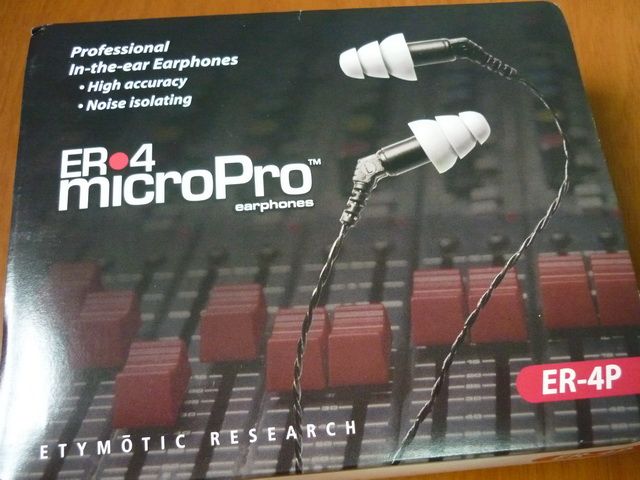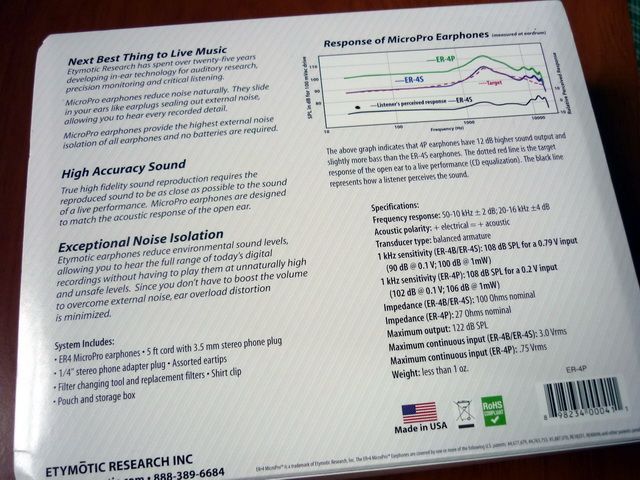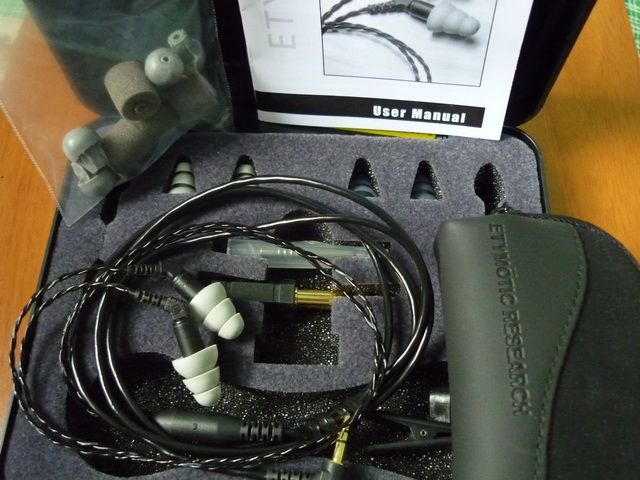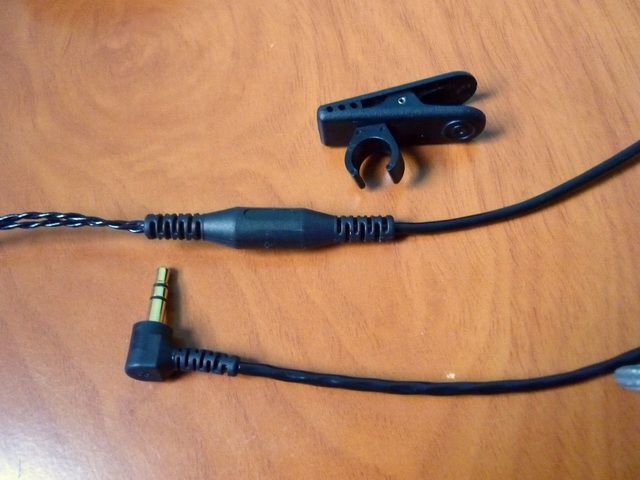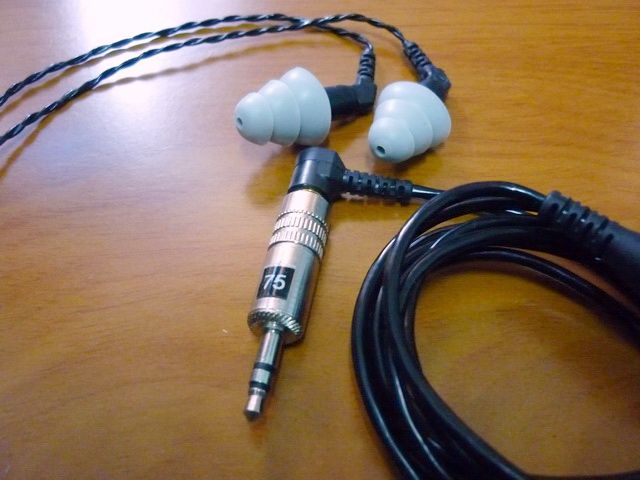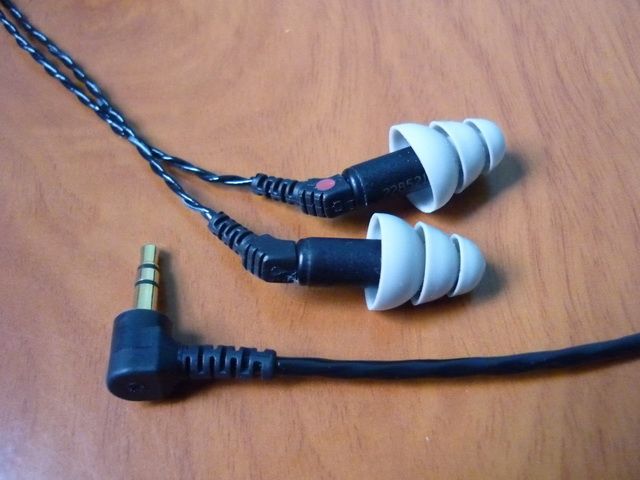To say Etymotic ER4 series is a classic is in itself an understatement. I mean, do any person knows of another IEM model that can be sold for 19 years with minimum change yet still be considered by many to be the golden standard of accuracy? Or perhaps we want to revisit the fact that it is the first ever universal IEM that is made for music with a rated accuracy score based on an industrial first scientific sound quality measurement developed and published by Etymotic? ER4 is without a doubt a living legend and will continue to impress many newcomers in the IEM world. More importantly, the series hasn’t lost its relevancy in the fast growing IEM world. There might be other IEM that can do certain things better, but ER4 is still one of the most revealing, detailed while neutral sounding IEM you can ever listen to. In this review, we will be focus on ER4P and the resistor-adapter-transformed ER4S.
Prelude
As the story about IEM began, it was back in around the mid 80’s that a few rock stars began to invest into the development of IEMS (in-ear-monitor system) for their own hearing sake (with a few more advantages on the stage of course). Marty Garcia, founder and CEO of Future Sonics, is probably the first to complete the system and started the movement of high quality custom molded earphone for stage monitoring. A few years later in 1991, Etymotic answered the call of a more convenient, more universal and accurate monitor that is designed toward off-stage and general music listening, thus born the original ER4 – better known now as ER4B. B is for ‘binaural’, as ER4B is tuned toward binaural recording playback. As good as it is, ER4B is found to be a little too bright for the general, non-binaural recording. So Etymotic retuned the 4B and came out with the ER4S. S is for ‘stereo’, as in your typical 2 channels a.k.a. stereo recording in cassette and CD. Years later when portable audio became mainstream, Etymotic further tuned the 4S to 4P (as in ‘portable’) by reducing the impedance from 100ohm to 27ohm. Though 4P is easier to drive directly from a portable source such as portable CD player or DAP (digital audio player, or ‘mp3 player’ if you like), it doesn’t sound quite as accurate (a discussion later on). That being said, the only difference between 4S and 4P is on the ‘pod’ of the cable where the resistors are housed inside. By simply adding a 75ohm resistor adapter (which Etymotic does sell), you can essentially change the 4P to 4S. Unfortunately you can’t do the same to 4B since it has an extra pair of capacitors in the pod. The earpieces (where the balanced armature drivers housed) are essentially identical between the three models.
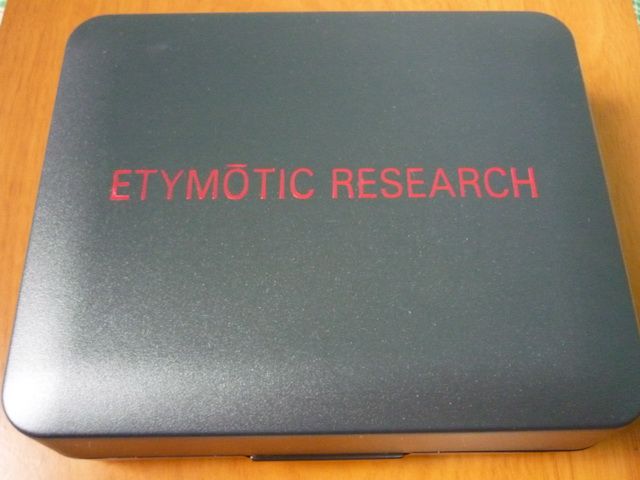
Spec
Response Accuracy:
ER•4S MicroPro Earphones: 92%
ER•4P MicroPro Earphones: 86%
Noise Isolation: 35-42 dB
Frequency response: 50-10 kHz ± 2 dB; 20-16 kHz ±4 dB
Acoustic polarity: + electrical = + acoustic
Transducer type: balanced armature
1 kHz sensitivity (ER•4B/ER•4S): 108 dB SPL for a 0.79 V input
(90 dB @ 0.1 V; 100 dB @ 1mW)
1 kHz sensitivity (ER•4P): 108 dB SPL for a 0.2 V input
(102 dB @ 0.1 V; 106 dB @ 1mW)
Impedance (ER•4B/ER•4S): 100 Ohms nominal
Impedance (ER•4P): 27 Ohms nominal
Maximum output: 122 dB SPL
Maximum continuous input (ER•4B/ER•4S): 3.0 Vrms
Maximum continuous input (ER•4P): .75 Vrms
Packaging, Accessories and Build Quality
‘Like a tank’ is perhaps what describes ER4’s packaging the best. There is no extra paper box or blister pack that needs to be threw away. The hard case that houses the IEM is also the packaging, just slide it out from the outer paper warp (where the printing is) and you are ready to go. The inside of the heard case are all foam padded with different compartments for both accessories and the IEM itself. For convenience, there is also a smaller soft pouch for portable use. Other accessories include: shirt clip (goes onto the cable’s pod), extra pair of regular tri-flanges, a pair of small tri-flange for smaller ear, two extra pair of filter and the filter replacement tool, two pair of regular foam tip, two pair of mushroom-like Glider foam tip and one 3.5mm to 6.5mm stereo adapter. ‘Generous’ is how I will describe the amount of accessories.
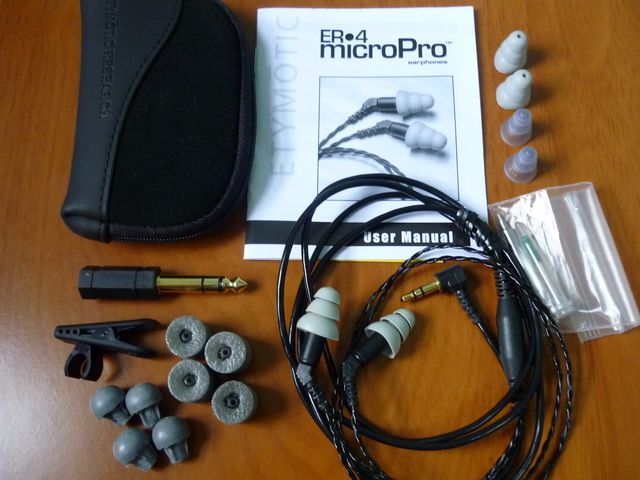
While the cable has been updated a few times, the basic design for the ER4 pretty much remains the same all these years with small improvements here and there. However, you can pick up a 10yrs-old ER4 and it will still feel almost identical to a brand new one. The simplicity of the design also means there are very few things that can go wrong on an ER4, though degradation due to wear and tear is still unavoidable. The good news is Etymotic has built up a reputation on great customer service. It is often reported that people who found decade old beaten up ER4 in the drawer and sent it in for service not only get the IEM fixed up, but also with minimum charge. This is one of the main reasons why Etymotic still commands one of the biggest fans group in the IEM world with a two decades old products.
The 'pod' on the cable is the main difference between 4P, 4S and 4B.
Perhaps the biggest complaint people have with ER4 is its out-dated look. While the ‘Charismas tree’ earpieces with tri-flange and the cable’s pods might not be the most modern or practical design, it has always been the same for Etymotic’s products. If you really care about styling, then maybe you are not really an Ety-person, as many will say. Beyond the look, the other complaint people often have is the microphonic cable. The cable is quite heavy and the earpieces’ design makes it not good for over-the-ear wearing. While the shirt clip is a help, it is still relatively microphonics compared to other IEM. Unfortunately there is little that can be done to it, even though years ago Etymotic did redesign the cable for this particular issue.
Only area that you won't see many complaint about Etymotic is its isolation. It is either very complex engineering or simply sheer magic that all Etymotic IEM have extremely good isolation, ever better than most foam plug in drugstore. Unexceptionally, ER4 too has the best isolation - perhaps even too good for street use, so bewared.

Side by side with (from left) DBA-02, Triple.fi 10, SE530, e-Q7.
Sound Quality
As usual, the IEM was burned in for a minimum of 50hrs before the review. No noticeable change was detected during the process. However, there are more to burn-in (so to speak) for the Etymotic and I am talking about the tri-flanges here. Silicone tri-flange of this kind (including the similar type by Shure and Westone) often tends to be too stiff and scratchy when it is new. This is why many new user complaint about it and turn the IEM down in first few use. Once it was used for a week or two, the tri-flanges will begin to soften up as it absorbs moisture and skin oil. An old trick is to lubricate the tri-flanges with some baby oil (the no extra additive kind) a few days before usage. Beware that you should only apply baby oil on the flange (where it makes contact with skin) but not on the tube of the tri-flange. This trick should help to break the tri-flanges in faster and provide a more comfortable fit early on.
How would any one describe the Etymotic’s house sound? It is analytical and bright, fairly neutral while slightly on the thinner and colder side, tight and impactful bass that isn’t quantitatively large, resolving and fast which are very typical of BA based IEM. This is the sound Etymotic concluded from different studies done 20 years ago involving the accuracy of sound reproduction. However there were discussions over the year among users on whether such kind of sound really is accurate. I think the answer can be both yes and no. While technically speaking, the flat, neutral Ety sound can be a representation of how sound is ought to be reproduced; the common trend among headphone manufacturers is however to EQ the missing part of the sound and makes it more engaging in order to recreate the speaker-like listening experience. The issue about headphone in general (compared to speaker) is that it doesn’t kick enough air on low bass note to give the listener the same ‘pounding’ as if from a speaker. So the solution is to bump the bass note a little up than what it should have been to simulate a proper ‘feel’. Etymotic on the other hand is perhaps more interested in the proper listening, or the accuracy of their sound, and less interested in the tactual compensation. While the philosophy and principles might be different between the two schools, there is nothing wrong with either ways actually. The important bit is whether the user has chosen the right sound to his/her ears. Hence that is why an Ety fan will always be an Ety fan, and vice versa.
The overall sound signature of ER4P is, as mentioned, analytical, a little on the bright side but not harsh, resolving and fast with slightly upper mid ~ lower treble focus; fairly neutral while still retains a tiny sense of warm. Bass is very tight, impactful but lacks a good body, while instruments separation is good, air and depth reproduction isn’t – thus soundstage is mediocre.
ER4P with AW Audia's 75ohm adapter.
ER4P to 4S transformation with 75ohm adapter
As mention early on, ER4P can be transformed to ER4S by adding a 75ohm resistor adapter. The original adapter by Etymotic has an asking price of $65, which is quite a lot for nothing more than a stereo jack, a plug, some wires and a pair of resistors put together. The good news is that ER4 has been in the market for such a long time, getting an aftermarket P-to-S resistor adapter of the same spec is neither difficult nor expensive. Generally you can find a good quality one on eBay for around $20 or less. The one I have is made by AW Audio (eBay: AWWAN) and it is pretty solid. In fact the same seller also makes different cable adapter and custom cable for the ER4 series that can transform your ER4 between the P, S and B version of your liking, though some of the price aren’t cheap at all. Beside the difference in sound to the 4P, 4S will need an amp to sound at its best. You can still get plenty loud directly from most sources without a dedicated amp, but it will sound more compressed and lifeless.
The overall sound signature of ER4S is lighter and more felt more expended compared to 4P. Analytical and fairly bright but not harsh, extremely resolving and fast while remain very neutral, flat and cold across the whole frequency range. Bass remains very tight, impactful while still lacks a good body – though not as obvious as in 4P due to the more neutral presentation. Instruments separation is great, very decent air and okay depth reproduction which means the soundstage is about average. While not the most extended IEM in the treble region*, the micro detail retrieval is very staggering and quite possibly the best there is.
*HifiMan RE0 has the best high end extension I ever heard.
Verdict
For an old timer in the rapidly growing IEM market, Etymotic ER4 has stood the trial of time very well. Granted it is not a sound for everyone, it is still has one of the top spot among some of the more expensive new comers. For a price around $180 these days, it is a deal not to be missed by any analytical listener. Though I do find ER4S to sound a little better, the more practical thing to do will be to get the 4P and an extra aftermarket adapter. This way you can have two IEM in one package, especially consider that they do sound different enough to worthwhile. But if you are a diehard Etymotic fan who doesn’t mind carrying an amp around, ER4S will work out just as well. A Sonic Diamond is awarded to ER4S for its outstanding value though the rating will be even higher if not for the requirement of dedicated amping.
This above rating is for Etymotic ER4P only and may change without notice. Please refer to the list for a complete listing.
This above rating is for Etymotic ER4S only and may change without notice. Please refer to the list for a complete listing.
*[24th Nov 2010] Due to the recent increase in street price regarding both ER4 models, ratings have been adjusted
. Please refer to
the list for an updated listing.
